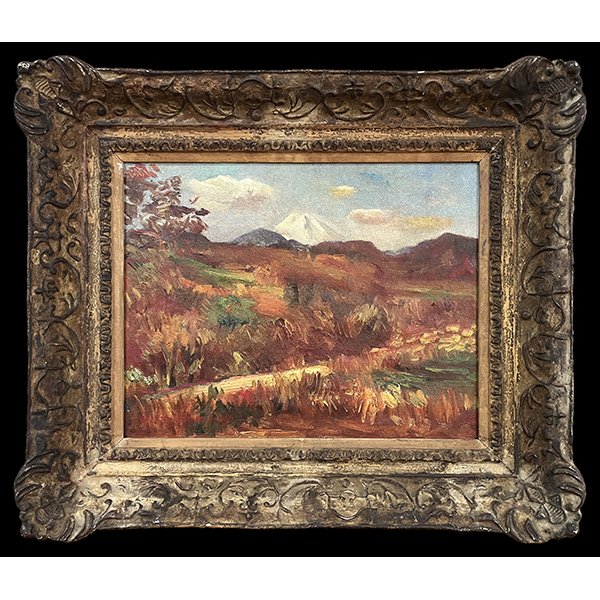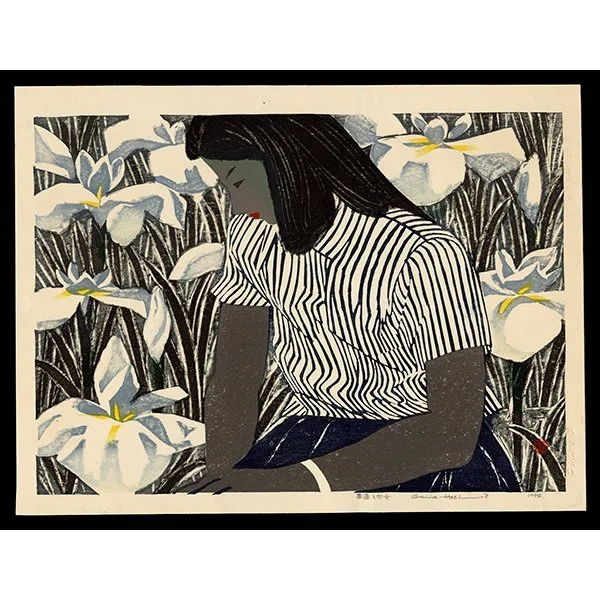<b>NUDE WITH GOATS</b>Okiie Hashimoto1955<b>SOLD</b></em>
ARTIST: Okiie Hashimoto (1899-1993)
TITLE: Nude with Goats
EDITION: 2/50
MEDIUM: Woodblock print
DATE: 1955
DIMENSIONS: 30 1/2 x 21 inches
CONDITION: Excellent; no problems to note
Literature: Okiie Hashimoto Japanese Castles Complete Collected Works, Kodan-sha, 1979
SOLD
ARTIST: Okiie Hashimoto (1899-1993)
TITLE: Nude with Goats
EDITION: 2/50
MEDIUM: Woodblock print
DATE: 1955
DIMENSIONS: 30 1/2 x 21 inches
CONDITION: Excellent; no problems to note
Literature: Okiie Hashimoto Japanese Castles Complete Collected Works, Kodan-sha, 1979
SOLD
ARTIST: Okiie Hashimoto (1899-1993)
TITLE: Nude with Goats
EDITION: 2/50
MEDIUM: Woodblock print
DATE: 1955
DIMENSIONS: 30 1/2 x 21 inches
CONDITION: Excellent; no problems to note
Literature: Okiie Hashimoto Japanese Castles Complete Collected Works, Kodan-sha, 1979
SOLD
Details
Most known for his views of castles and rock gardens, Okiie Hashimoto, was also an accomplished portrait artist and created several iconic designs in this vein. This work is a rarely seen large-scale composition that celebrates the artist’s interest in portraiture as well as his fascination with texture and shape. Despite its imposing scale, the composition is a riot of carving, with a highly active backdrop that features the apt work of a skillful and spirited gouging knife. The expressive background filled with tall grasses and blooming trees reads much like an impressionist painting, while the foreground plays host to playful goats and two life-like nudes.
Beyond its expressive character, the composition has a surrealist bent. The unrestrained goats occupying the space with two unperturbed and perhaps disinterested nudes come across as a bit mystifying. The design seems to possess an underlying significance, perhaps with an esoteric allusion. A riddle the viewer is left to ponder as the logic of the scene escapes one’s grasp.
Connoisseur's Note
Although originally editioned at 50 impressions, it is doubtful the artist ever completed the run. The size of the composition would have been prohibitively large for most Japanese collectors of the period, not to mention the cost of the production. This impression most likely found a home with a wealthy foreigner who possessed a large-scale Western-style house. As such, only a handful of impressions were produced, as evidenced by the design’s scarcity in the marketplace.





